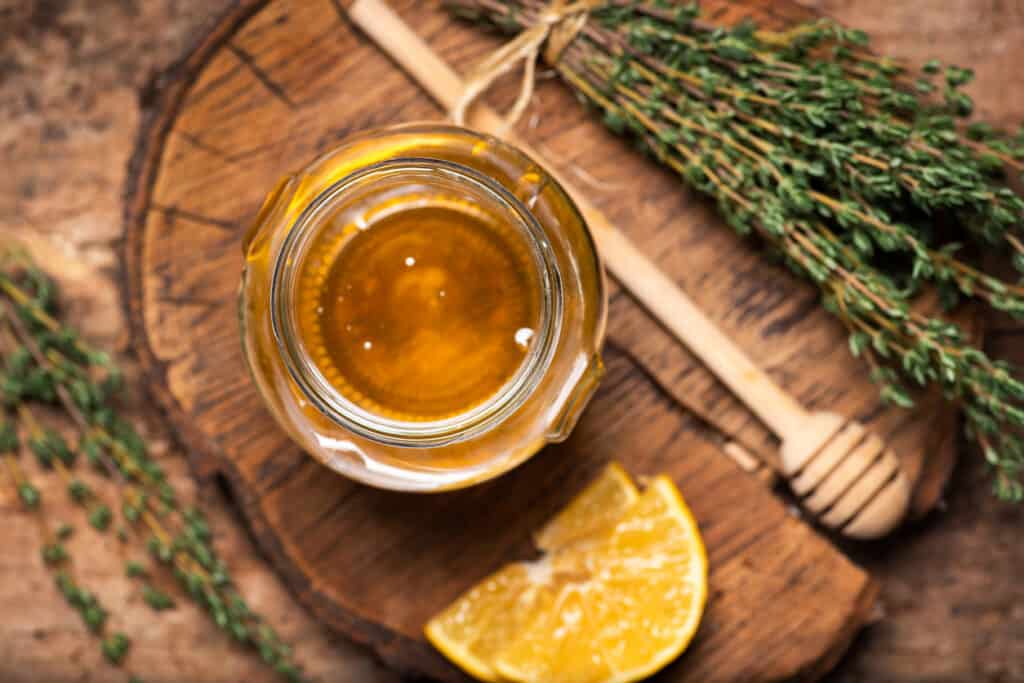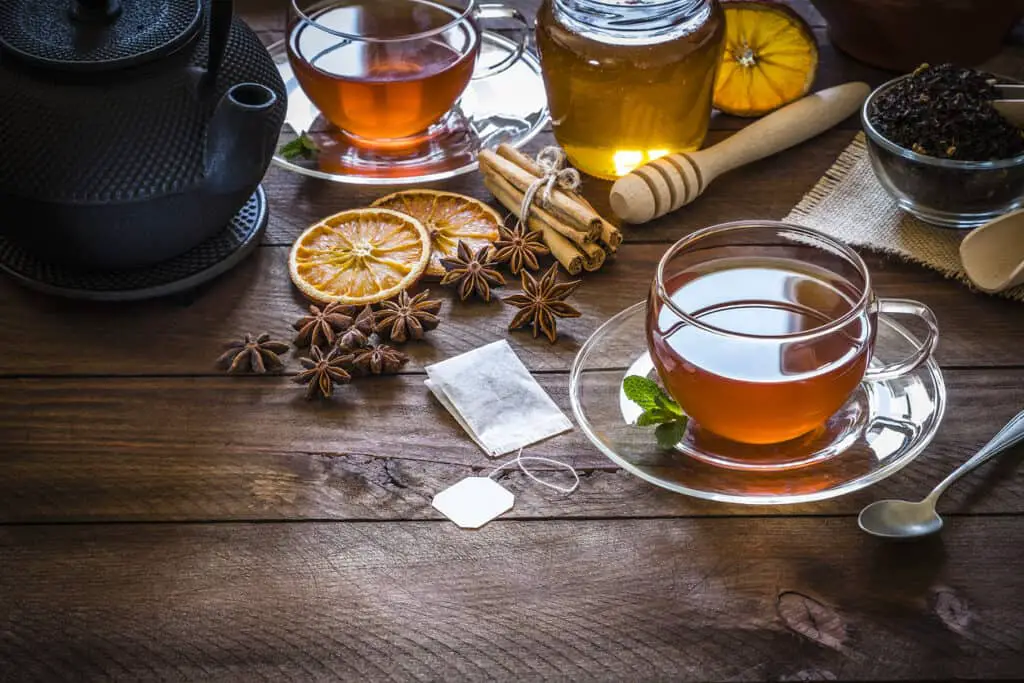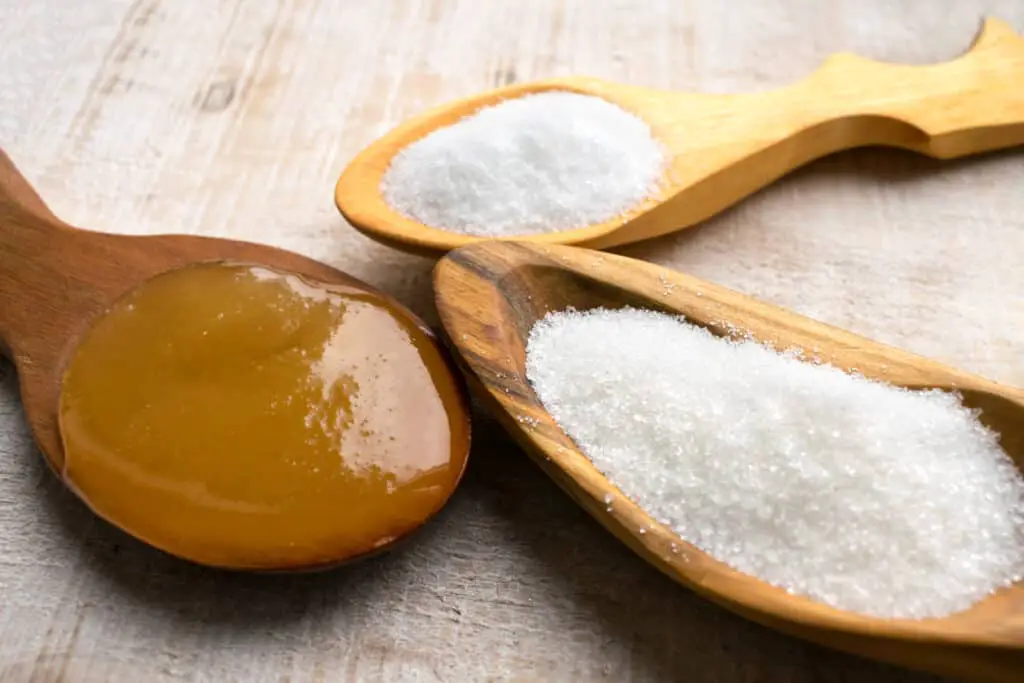Honey is delicious and used in various dishes, drinks, and sauces. However, if you’ve ever asked or been asked to describe the taste of honey, you might be left scratching your head to think of the right words. So what does honey taste like?
Depending on where the honey is harvested and the process it goes through before it is sold, one bottle of honey tastes vastly different from another. While many might say that honey tastes sweet, the truth is much more complex. Honey also differs in terms of color and scent.

Being able to describe precisely how honey tastes might seem like a difficult task. This article discusses the factors that influence the taste of honey, the difference between raw and processed honey, and the best way to taste honey. Come along as we discover the intricacies of honey tasting.
What Factors Influence The Taste Of Honey?

Simply describing honey as tasting sweet is an injustice to the bees that worked tirelessly to create the honey and the taste of honey in general. Honey tastes much different from simple syrup, which you can safely describe as tasting sweet.
Honey cannot be described as simply tasting sweet because so many factors influence honey’s taste, color, and aroma. Honey is much like chocolate, cheese, or wine in that every jar of honey tastes different from the next. Therefore, when tasting honey, you must treat it with the necessary respect and admiration it demands.
One of the most significant factors influencing honey’s taste is the area where the honey was harvested. So, let’s see how this affects the honey’s flavor.
How Does Region Affect The Taste Of Honey?

Before discussing what honey tastes like, we must first consider what factors influence the taste. Because the area in which the honey was harvested dramatically affects the resulting honey’s taste, we will discuss this topic first.
Bees produce honey by harvesting nectar from flowers surrounding their hive. They gather the nectar from these trees and break the nectar’s sugars down into simple sugars before they reduce the water content of the nectar to form a concentrated, delicious syrup known as honey.
The honey’s taste depends mainly on the type of flowers the bees harvested the nectar from. Thus, the area where the honey is harvested also determines the taste. For example, honey harvested in clover fields tastes different from honey harvested in wheat fields or wildflower honey.
Wildflower honey is a broad term farmers often use to describe honey harvested in areas where multiple blooms contribute to the nectar. However, don’t think that all wildflower honey tastes the same. Like the wild vegetation in each region, the honey harvested from that region also tastes different.
In addition to the honey tasting different in various regions, the honey will also look different. For example, honey gathered from some flowers will have a light, golden color. However, honey harvested from other regions has a darker amber or red color.
Finally, honey from different areas also has different aromas, depending on the flowers used to make the honey. For example, honey made from orange blossoms smells different from honey made from wheat flowers or clover.
How Do Seasons Affect The Taste Of Honey?
Another factor that influences the taste of honey is the season in which the honey is made. For example, the nectar isn’t as sweet when the flowers have just opened in the early spring, and the bees start harvesting nectar. Therefore, the honey produced from this nectar isn’t as sweet as honey made later in the season.
During late summer and early fall, the flowers compete for the attention of the bees to pollinate them. Therefore, the nectar has much more sugar and smells and tastes sweeter. As a result, honey made from this nectar also has a much sweeter taste than honey made early in the season.
Once again, the taste of honey isn’t the only thing that changes with the seasons. The color of the honey also differs depending on when the honey was harvested. This can also be attributed to the sugar content of the honey. As a result, the sweeter the honey, the darker the color often is.
To experience the difference between early and late season honey, we recommend purchasing honey from the same region in the early spring and the late summer or autumn. This will allow you to experience the difference in taste, scent, and color between the early season and late-season harvest.
Now that we have discussed the factors that influence the taste of honey, we can discuss the different flavor profiles. When you get to know the flavor profiles of the honey, you can learn to appreciate honey from various regions and seasonal times.
Different Honey Flavor Profiles
There are many flavor profiles of honey. However, there is a big difference between uni-varietal and multi-varietal honey. Uni-varietal honey comes mostly comes from farms and regions where one type of plant is cultivated. Therefore, all the honey from that region is produced using the nectar from that plant.
This honey has a specific taste depending on the crops used in that area. However, early and late-season honey from uni-varietal crops also tastes differently. Likewise, honey from a particular harvest can taste different in certain regions.
However, multi-varietal honey can taste vastly different depending on the region and vegetation. Therefore, it’s always interesting to try regional honey when traveling or visiting a new area. Some essential flavors to look out for when tasting honey are the following.
1. Fruity Notes In Honey
Fruity honey has flavors like strawberries, blackberries, or cherries. In addition, you can get tropical fruit notes, such as pineapple or mango. Sometimes, you can pick up some citrusy notes, such as lime, orange, or grapefruit.
You can also notice if the flavors are sweet or tart, like ripe or unripe fruit. Fruity notes can be detected in the taste and aroma of the honey.
2. Floral Notes In Honey
Floral honey notes likely include peony, rose, lavender, and jasmine. In addition, you can taste various wildflowers in honey. Some floral notes are sweet, like perfume, while other floral notes can have a more tangy, aromatic scent.
Floral notes can also be detected in the taste and smell of the flowers. For example, most people enjoy floral honey, which serves well as a sweetener for honey or other foods.
3. Fresh Flavors In Honey
Honey can also have a fresh taste or scent, such as apples, mint, or thyme. Honey with fresh notes makes a great salad dressing and offers a light and refreshing taste. You can also pair this honey with cheese, such as camembert.
4. Warm Notes In Honey
Warm notes, such as burned caramel, butter, marshmallow, and butterscotch, make up the warm components of honey. These warm notes add a delicious richness to the honey and pair well with tea, cakes, and desserts.
5. Other Notes In Honey
In addition, you can also possibly detect smokey flavors, such as wood, ash, or pine in the honey. Furthermore, you can perhaps detect chemical notes, such as plastic or metal. Vegetal notes and animal notes, such as musk, are also noticeable in the honey.
Finally, you can also detect some funky flavors in the honey. Funky flavors include cheese, moss, yeast, and fermentation. As you can see, there are various flavors detectable in honey. Therefore, taking the time to explore and taste different types of honey will help you determine which honey you prefer and appreciate the differences in honey.
What Is The Difference Between Raw And Processed Honey?
Another key difference that influences the taste of honey is if the honey is processed or raw. Raw honey is collected from the beehives and packaged as is without undergoing any heat treatment to remove bacteria from the honey.
Processed honey, on the other hand, uses heat treatments to clear the honey of bacteria and impurities. However, this heat treatment also removes the beneficial bacteria in the honey and alters the taste.
For this reason, processed honey, often found in chain-store supermarkets, usually tastes sweet with minimal other flavors. This is because the honey from various beehives and one type of honey taste is diluted.
However, is raw honey unsafe because it isn’t heat treated? The truth is that it isn’t. Honey is a fantastic substance with its own anti-microbial and anti-bacterial properties. Therefore, raw honey isn’t unsafe to consume. In addition, raw honey has several health benefits, such as:
- It is an excellent source of antioxidants.
- It contains various minerals and vitamins, such as calcium, magnesium, niacin, riboflavin, and zinc.
- Raw honey assists in wound healing.
- Raw honey is a superfood and aids in digestive health.
- Raw honey assists in healthy brain functions.
In addition to raw honey’s great benefits, it also tastes better. Raw honey is packed with flavor, and you can detect various subtle notes and aromas within a jar of raw honey. Therefore, when you choose raw and processed honey, always opt for raw honey. You’ll not only enjoy the many health benefits of raw honey, but you’ll also enjoy great-tasting honey.
What Is The Best Way To Taste Honey?
When starting the honey tasting journey, you might be interested to know the best way to taste honey. But, of course, the best way to notice the subtle differences between various types of raw honey is to eat the honey.
To start honey tasting, get a few different types of raw honey. Then, decant the honey into a clear glass or plastic container. Label the container, so you know which honey you’re tasting. Finally, ensure your guests have a glass of water to cleanse their palates between tastings.
Now you are ready to taste the honey. First, admire the color differences between the kinds of honey. If you’re new to honey tasting, we suggest honey from various regions, times of the year, and cultivars. This way, there will be a more significant distinction between each kind of honey.
Once you have admired the color of the honey, move on to the scent. See if you can detect the different flavors of the honey, such as floral notes, smokey tones, and fruity scents. Each type of honey will have a slightly different smell. Try to discover which aroma you prefer.
Now you are ready to taste the honey! First, place a small dollop of honey on your tongue and swirl it around your mouth. Notice the texture and undertones in the honey. This is the best way to pick up on the subtle changes between the different types of honey.
Once you have tasted all the honey by itself, feel free to pair the honey with crackers, fruit, and cheeses. This is the best way to determine the differences between raw honey and appreciate the various aspects of honey.
Where To Find The Best Tasting Honey?
As we’ve mentioned, supermarkets often store processed and diluted honey that doesn’t taste like more than sweetened syrup. Therefore, if you’re looking for exceptional honey, the best place to look is at local farmers’ markets or buy the honey directly from your local honey farm.
When traveling to another state or area, also buy some local raw honey there to better compare the different tastes you find in honey. Some popular kinds of honey to try are:
- Buckwheat Honey
- Wild African Honey
- Canola Honey
- Guajillo (chili) Honey
- Chestnut Honey
- Wild Blueberry Honey
Also, try to find the same cultivar of honey harvested at different times of the year and see if you notice the subtle differences between early and late-season honey. Finally, only purchase honey from sustainably sourced bee farms and try to support local wherever possible.
Conclusion
This article discussed everything you should know about tasting honey. We talked about the different flavor profiles of honey, the factors that influence honey’s taste, how to best taste honey, and the difference between raw and processed honey.
Ultimately, honey tasting is a unique experience. With the help of this article, you have a much better understanding of how to describe honey than simply saying it’s sweet. Hopefully, you enjoyed this article and look forward to your next honey tasting experience even more.
References
https://www.healthline.com/health/food-nutrition/top-raw-honey-benefits
https://www.researchgate.net/post/How-can-you-differentiate-between-natural-and-fake-honey

